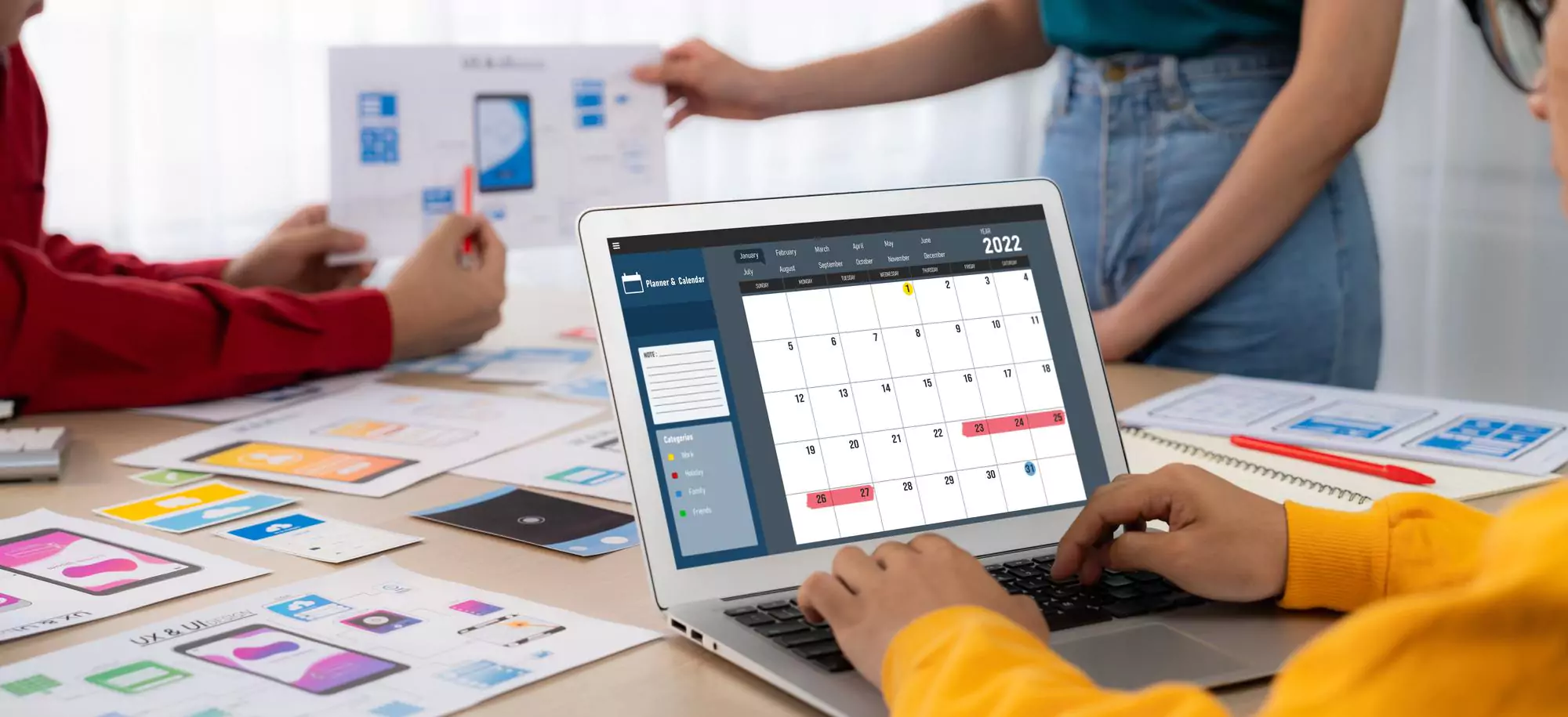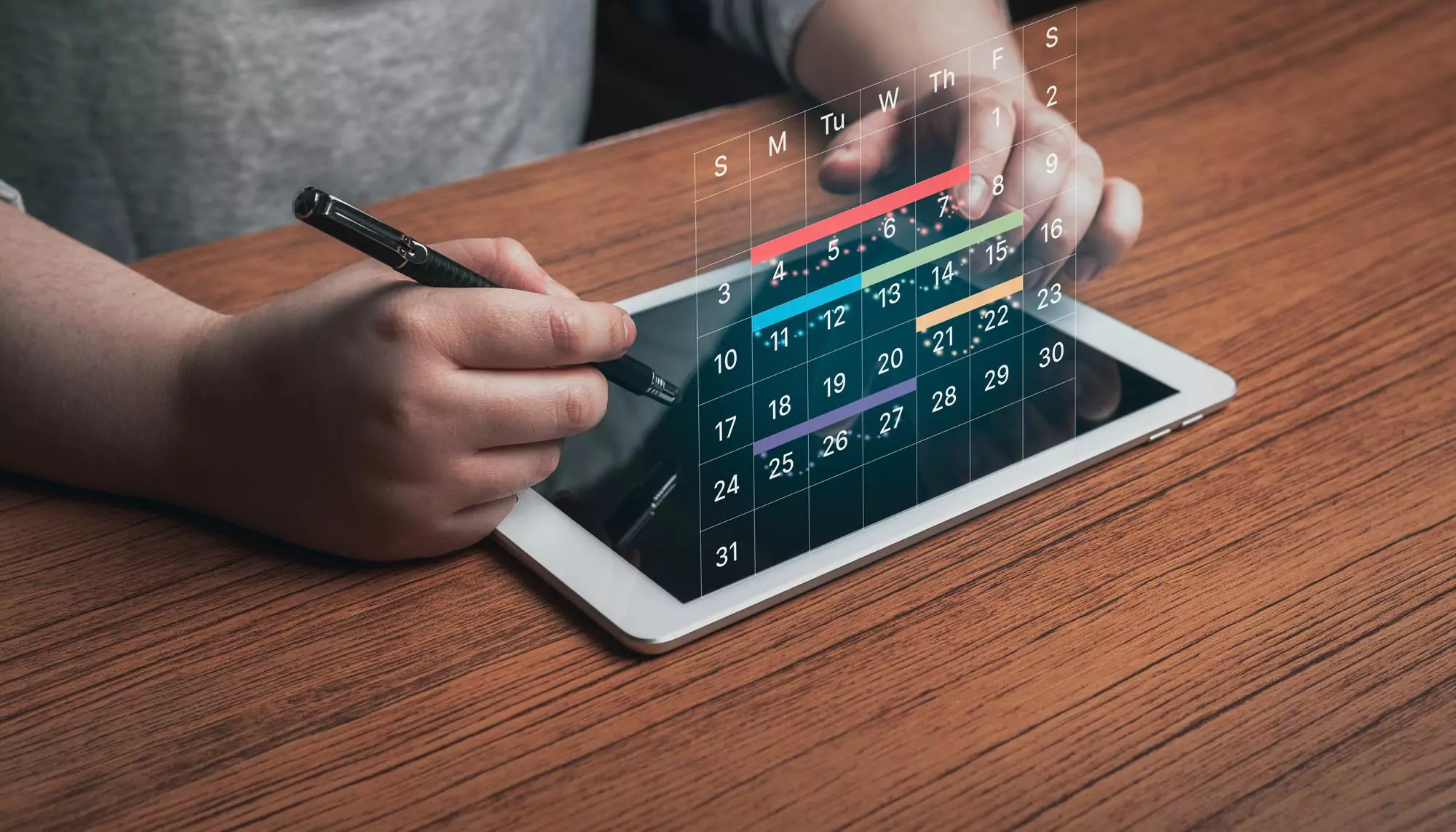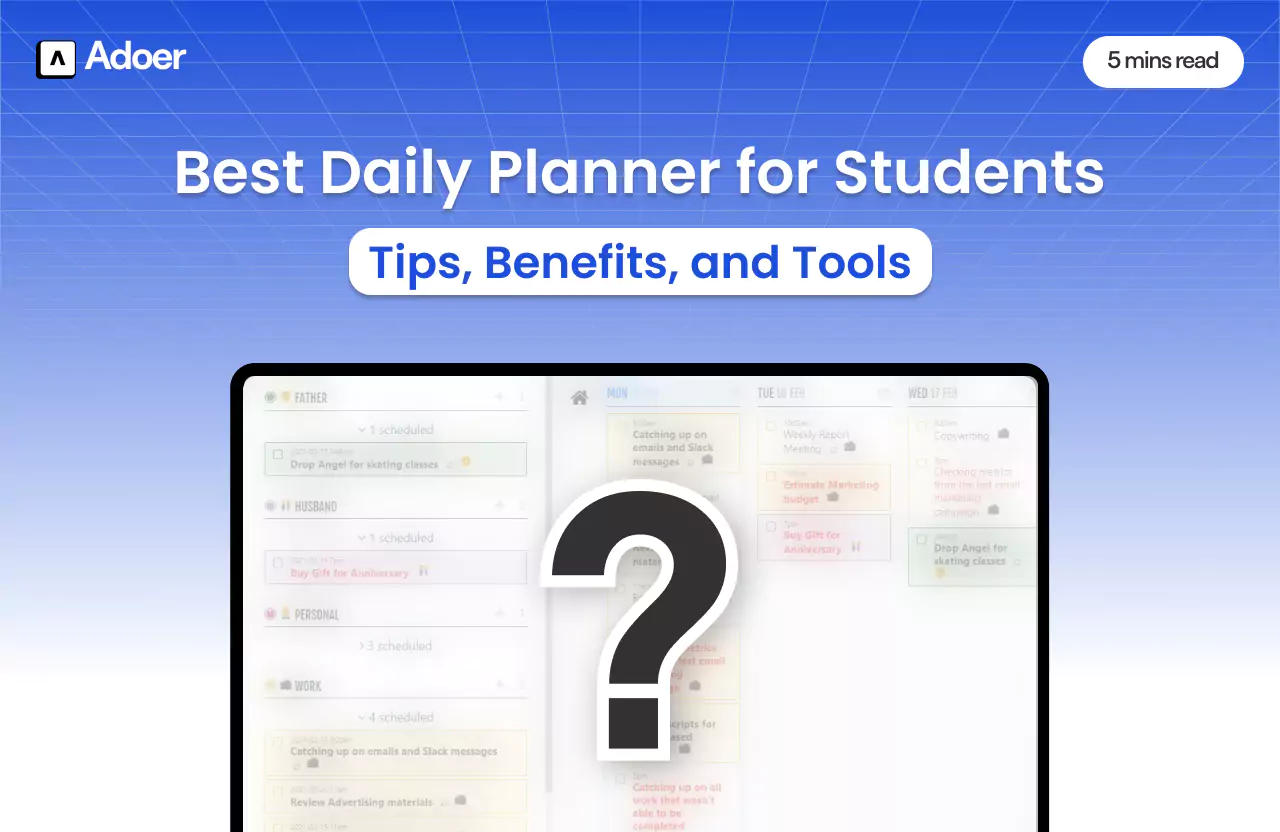Best Daily Planner for Students: Top Tools and Tips for Success

Author
Shivang Khungar
Staying on top of assignments, exams, extracurricular activities, and personal commitments can be overwhelming for students. Here, a daily planner for students can be a game-changer, providing structure, improving time management, and reducing stress.
A study by the National Education Association (NEA) found that 70% of students struggle with managing their time effectively.
Moreover, in a study published in the Journal of Educational Psychology, students who consistently use planners are 40% more likely to meet their academic goals and experience a 25% reduction in stress levels.
Without proper planning, students often face missed deadlines, last-minute cramming, and burnout. For example, a student juggling five courses and two extracurricular activities can use a daily planner to allocate time wisely. Thus, ensuring every task is addressed.
In this article, we’ll explore why every student needs a daily planner, the best daily planner for students, and how to use one effectively for academic and personal success.
Why Do Students Need a Daily Planner?
Time Management
Effective time management is essential for balancing academics and other responsibilities. A daily planner for students helps allocate time for each task, ensuring deadlines are met and minimizing procrastination.
For example, using a daily planner for students can help break down a 2-week project into manageable daily tasks.
Stress Reduction
Without a clear plan, students can feel overwhelmed by their to-do lists. A daily planner for students provides clarity, allowing students to break tasks into manageable steps.
For instance, students who spend 10 minutes each morning updating their planners often report a sense of control over their day.
Improved Productivity
Having a daily planner for students encourages focus and prioritization. By outlining tasks and goals for the day, students can concentrate on what truly matters and avoid distractions.
This structured approach often leads to better outcomes in less time. For example, students using digital planners like Google Calendar often report saving of their time compared to those without structured plans.

Types of Daily Planners for Students
Physical Planners vs. Digital Planners
When it comes to choosing a daily planner for students, physical planners offer the tactile satisfaction of writing tasks down.
On the other hand, digital planners, such as Adoer or apps like Notion, provide flexibility, note-taking, and easy sharing options. Therefore, selecting the right planner depends on your personal preferences.
Weekly vs. Daily Planners
For students managing a heavy workload, deciding between a weekly and daily planner is essential. While weekly planners provide a broad overview of tasks, daily planners focus on day-to-day details. Thus, ensuring that no deadline is missed.
For instance, combining a daily planner for students with a weekly planner allows for effective tracking of long-term goals while staying on top of immediate priorities. Consequently, this strategy can help streamline even the busiest schedules.
Specialized Planners
In addition to general planners, some are specifically designed to cater to student needs. These specialized options often include sections for academic schedules, exam preparation, and goal tracking.
For example, Adoer offers note-taking tailored for students, making it easier to organize assignments and grades. Ultimately, using a daily schedule planner for students with such features can significantly reduce stress, especially during exam seasons.
Related: Explore best note-taking apps for iPad in 2025.
Key Features to Look for in a Daily Planner
Customization Options
Look for planners that allow you to personalize layouts, colours, and sections. This ensures the planner fits your specific needs. Digital planners often excel in customization. Tools like Notion let you design your planner with drag-and-drop simplicity.
Goal-Setting Sections
Dedicated sections for setting short- and long-term goals help students stay focused and motivated. Goal-oriented planning has been linked to higher academic success, as noted by studies from Stanford University. A daily planner for students with a quarterly goal review section can be a powerful tool for maintaining focus.
Task Prioritization Features
Planners with prioritization tools, such as Eisenhower matrix-inspired layouts, make it easier to tackle high-priority tasks first. For example, identifying "urgent but not important" tasks can help students focus on what truly matters.
Daily Reflections or Notes Space
A space for daily reflections or notes allows students to document accomplishments and areas for improvement. Thus, fostering a growth mindset.

Best Daily Planners for Students in 2025
Adoer
Known for its student-focused features like note-taking, priority tags, and adaptive UI. Adoer provides features such as motivation quotes, minimalist design, and a focus timer designed specifically for students.
Also, its ability to integrate with calendars, makes it a versatile choice for both academic and personal use.
Google Calendar
A free and highly accessible tool that syncs seamlessly across devices. Google Calendar integrates effortlessly with Gmail, allowing students to turn emails into events and set reminders for classes, assignments, or personal tasks.
Its colour-coding feature helps distinguish between academic and personal activities, making planning straightforward.
Notion
A multi-functional tool that allows students to create highly personalized planners. Notion’s drag-and-drop interface makes it easy to build task lists, habit trackers, and goal-setting boards.
With a library of pre-made templates, students can quickly set up schedules tailored to their academic needs. The notion also supports collaboration, making it ideal for group projects.
Todoist
A minimalist yet powerful task management tool designed to help students stay organized. Todoist enables students to prioritize tasks, set recurring reminders, and track progress with its intuitive design.
It syncs across all devices, ensuring that deadlines and assignments are always within reach. Todoist also offers an offline mode, perfect for when internet access is limited.
Any.do
A versatile planner that combines task management with calendar views. Any.do’s features include reminders, voice entry for tasks, and collaborative tools for group assignments.
Its simple interface and cross-platform compatibility make it ideal for students managing multiple responsibilities.
How to Use a Daily Planner for Students Effectively
Set Realistic Goals
Start by defining achievable goals for each day. Overloading your planner with too many tasks can lead to frustration and burnout. Instead, focus on 3–5 high-priority tasks each day.
For example, a student might set goals like completing math homework, revising two chapters for an upcoming exam, and attending a study group. Achieving smaller, realistic goals boosts confidence and sets the tone for consistent progress.
Break Tasks into Smaller Steps
Divide large assignments into smaller, actionable tasks. This technique is especially helpful for tackling overwhelming projects.
For instance, instead of writing "Complete research paper," break it down into “Draft introduction,” “Compile research sources,” and “Create an outline.”
A daily planner for students provides the perfect space to break and track these steps effectively.
Review and Adjust the Daily
Reflection is a key component of effective planning. A daily planner for students allows them to review what they accomplished at the end of each day.
Furthermore, students can adjust theplanslan for the next day based on this feedback. For example, if they underestimated the time needed for a history essay, they can allocate extra time tomorrow.
This habit keeps your plans realistic and ensures continuous improvement.
Leverage Planner Features
Maximize the features of the daily planner for students to enhance productivity. For instance, colour or coding to differentiate between academic, personal, and extracurricular tasks.
In addition, you can set reminders for deadlines or use habit trackers to monitor daily progress. In fact, digital tools like Adoer, Trello, or Google Calendar make these features easy to implement.
For example, assigning green to study tasks and blue to leisure activities can visually organize your schedule, reducing mental clutter. Leveraging these tools transforms your planner into a comprehensive productivity system.

Top Benefits of Using a Daily Planner for Students
Enhanced Organization:
A daily planner for students consolidates all tasks and deadlines, making it easier for students to manage their schedules. Organized students are 60% more likely to complete assignments on time, according to the Journal of Organizational Behavior.
This ensures that crucial deadlines for projects, exams, and personal goals are met seamlessly.
Better Time Utilization:
A daily planner for students reduces time wastage and allows students to prioritize important activities. The Time Management Research Group states that students who plan their days save an average of two hours daily.
Those hours can be spent on leisure, additional study, or self-care, significantly enhancing productivity.
Reduced Anxiety:
Having a clear plan eliminates uncertainty and last-minute rushes. In fact, the Anxiety and Depression Association of America found that structured daily planning reduces stress levels by 25% among students.
For example, students with detailed daily plans often feel confident about tackling complex schedules without unnecessary pressure.
Improved Academic Performance:
A daily planner for students can directly impact grades by them focus on critical tasks. Research indicates that students who actively plan their tasks score 20% higher in exams compared to their peers.
This demonstrates how consistent organization can boost academic results.
Personal Growth:
Consistent use of a daily planner for students builds discipline and helps students track personal habits and achievements.
For instance, noting daily gratitude or exercise routines has been linked to a 15% increase in happiness. A planner encourages reflection, fostering both personal and academic growth.
Why Adoer is the Best Daily Planner for Students
Students juggle assignments, deadlines, exams, and personal responsibilities daily. Adoer simplifies this chaos, emerging as the best daily planner for students. Its intuitive design, focused tools, and productivity-enhancing features set it apart from traditional planners.
A Minimalistic Design for Maximum Focus: Adoer’s clean and clutter-free interface ensures students can navigate their tasks without distractions. Whether it's organizing notes or planning the week ahead, simplicity enhances productivity.
A Dynamic Focus Timer: The Focus Timer breaks study sessions into manageable intervals, boosting concentration and reducing the chances of burnout. Students can tailor it to match their personal study rhythms.
Seamless Task and Note Integration: Unlike many other daily planner for students, Adoer combines note-taking and task management. This integration provides a holistic view of daily responsibilities. Thus, making it easier to prioritize and stay organized.
Morning to Evening UI Adaptation: Adoer’s interface adapts throughout the day—morning, afternoon, and evening. This unique feature helps students manage energy levels and stay on track, no matter the time.
Motivational Features for Inspiration: Daily motivational quotes and progress trackers keep students inspired. A visual bandwidth indicator helps students balance their workload and maintain a healthy schedule.
Web-Based Convenience: Adoer’s web-based platform makes it accessible from any device with internet connectivity. There’s no need to download or worry about compatibility—simply log in and start planning.
Designed for Academic Excellence: Every feature of Adoer is built with students in mind. From syncing tasks and deadlines to managing study sessions, Adoer ensures that no detail is overlooked.
Tips for Staying Consistent with a Daily Planner for Students
Set a Daily Routine: The daily planner for students should be updated each day to maintain consistency.
Use Reminders: A daily planner for students has features like alarms or notifications. Use them to stay on track.
Keep It Visible: Place your physical planner on your desk or keep digital planners pinned on your home screen.
Celebrate Wins: Reward yourself for completing tasks and staying consistent.
Conclusion: Daily Planner for Students
Managing your time effectively is key to reducing stress and staying on top of your goals. In fact, a daily planner for students isn’t just a tool, it’s a life-changer. Whether you’re juggling assignments, exams, or extracurricular activities, having a structured plan can make all the difference.
For example, digital options like Adoer offer flexibility and powerful features, while physical planners provide that satisfying, hands-on approach. To begin with, start small by jotting down your daily priorities.
Once you do this, you’ll notice a boost in your productivity and focus. So, why wait? Explore tools like Adoer to find the perfect daily planner for students and start your journey toward a more organized and successful 2025.
FAQs About The Daily Planner For Students
How does a daily planner help students?
A daily planner for students provides structure, helping them manage time effectively, reduce stress, and improve productivity.
What’s the difference between a daily and weekly planner?
Daily planners focus on detailed day-to-day tasks, while weekly planners provide a broader overview of the week.
Which is better: digital or physical planners?
It depends on personal preference. Digital planners offer flexibility and reminders, while physical planners provide a tactile experience.
Can Adoer be used for both personal and academic planning?
Yes, Adoer’s customizable features make it suitable for managing both personal and academic tasks.



